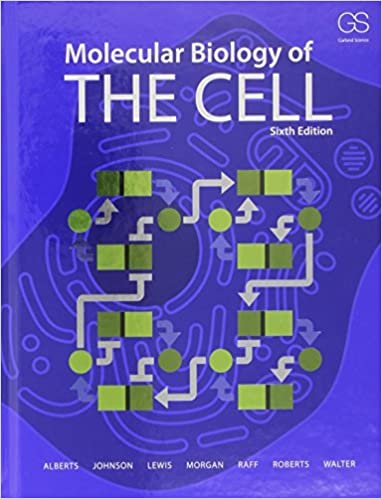
Molecular Biology Of The Cell 6th Edition by Bruce Alberts, Alexander Johnson, Julian Lewis, David Morgan, Martin Raff, Keith Roberts, Peter Walter
Edition 6ISBN: 978-0815345244
Molecular Biology Of The Cell 6th Edition by Bruce Alberts, Alexander Johnson, Julian Lewis, David Morgan, Martin Raff, Keith Roberts, Peter Walter
Edition 6ISBN: 978-0815345244 Exercise 10
Discuss the following problems.
-1 Acetylcholine-gated cation channels at the neu- romuscular junction open in response to acetylcholine released by the nerve terminal and allow ions to enter the muscle cell, which causes membrane depolarization and ultimately leads to muscle contraction. a. Patch-clamp measurements show that young rat muscles have cation channels that respond to acetylcho- line (Figure Q11-4). How many kinds of channel are there? How can you tell? b. For each kind of channel, calculate the number of ions that enter in one millisecond. (One ampere is a cur- rent of one coulomb per second; one pA equals
ions to enter the muscle cell, which causes membrane depolarization and ultimately leads to muscle contraction. a. Patch-clamp measurements show that young rat muscles have cation channels that respond to acetylcho- line (Figure Q11-4). How many kinds of channel are there? How can you tell? b. For each kind of channel, calculate the number of ions that enter in one millisecond. (One ampere is a cur- rent of one coulomb per second; one pA equals  ampere. An ion with a single charge such as
ampere. An ion with a single charge such as  carries a charge of
carries a charge of  coulomb.)
coulomb.) 
-1 Acetylcholine-gated cation channels at the neu- romuscular junction open in response to acetylcholine released by the nerve terminal and allow
 ions to enter the muscle cell, which causes membrane depolarization and ultimately leads to muscle contraction. a. Patch-clamp measurements show that young rat muscles have cation channels that respond to acetylcho- line (Figure Q11-4). How many kinds of channel are there? How can you tell? b. For each kind of channel, calculate the number of ions that enter in one millisecond. (One ampere is a cur- rent of one coulomb per second; one pA equals
ions to enter the muscle cell, which causes membrane depolarization and ultimately leads to muscle contraction. a. Patch-clamp measurements show that young rat muscles have cation channels that respond to acetylcho- line (Figure Q11-4). How many kinds of channel are there? How can you tell? b. For each kind of channel, calculate the number of ions that enter in one millisecond. (One ampere is a cur- rent of one coulomb per second; one pA equals  ampere. An ion with a single charge such as
ampere. An ion with a single charge such as  carries a charge of
carries a charge of  coulomb.)
coulomb.) 
Explanation
The rate of evolution in rat lineage dif...
Molecular Biology Of The Cell 6th Edition by Bruce Alberts, Alexander Johnson, Julian Lewis, David Morgan, Martin Raff, Keith Roberts, Peter Walter
Why don’t you like this exercise?
Other Minimum 8 character and maximum 255 character
Character 255


